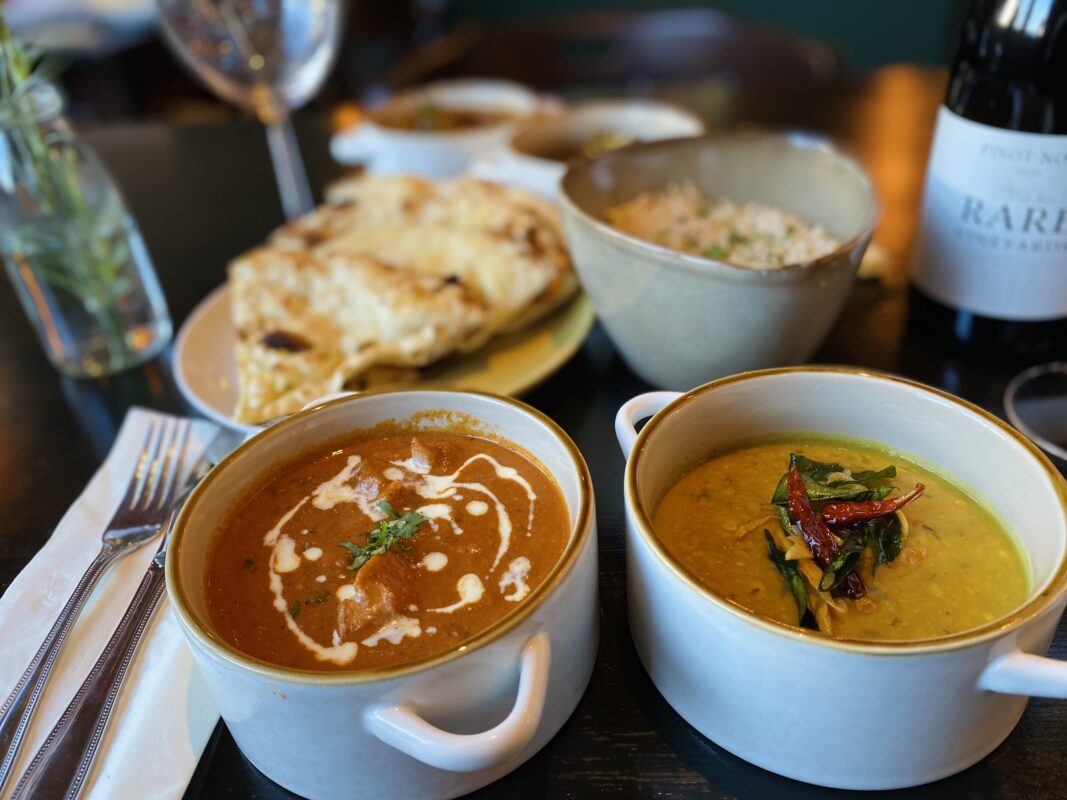Indian food is famous all over the world for its bright colours, strong tastes, and fragrant spices. It shows how different area tastes, cooking styles, and ingredients have been a part of this food history for a very long time. Additionally, what makes Indian food unique is the way that the different tastes worl together. Especially the way that spice and heat affect each other. This piece talks about the role that different spices play in achieving a harmonious blend of flavours, which is an important part of making tasty, authentic Indian food. Know more about Best Indian Gastro Pub Food in Cambridge.
Spices play a big role in giving Indian food its strong smells and tastes. In addition to adding taste, spices are used for their wonderful smell and health benefits. Indian food often uses spices like cloves, cardamom, ginger, fenugreek, mustard seeds, and different kinds of chilli peppers.
Spices: The Basis of Indian Cuisine
Essential Herbs and Their Purpose:
Cumin (Jeera): The warm, earthy taste makes it a popular ingredient to use at the start of cooking to temper the food.
Coriander (Dhania): It has a mild citrus taste and is used in many different ways, whether it is whole or ground.
Turmeric (Haldi): It tastes earthy and slightly bitter, and it’s a bright yellow colour. It is well-known for its ability to lower swelling.
Cardamom (Elaichi): Gives both sweet and savoury recipes a nice floral smell.
Cloves (Laung): Add a strong, spicy taste to curry and rice recipes.
Mustard Seeds (Rai): They’re great for finishing off meals because they’re spicy and nutty.
Fenugreek (Methi): It is often added to pickles and stews to make them taste a little bitter.
Chili Peppers (Mirchi): The peppery flavour and different levels of heat will be provided.
Influence of Heat in Indian Cooking –
Spices from chilli peppers are the main source of heat in many Indian recipes. Where you are, what you’re eating, and how spicy you like it all affect the degree of heat. It is essential to find the right balance of heat; it should complement the other flavours without being overpowering.
Distinct Chili Pepper Types –
Kashmiri Chili: It is a common ingredient in tandoori and gravy dishes because of its gentle heat and bright red colour.
Bird’s Eye Chili: The South Indian Cuisine frequently uses this extremely hot spice.
Green Chili: It adds a burst of flavour and a snap of heat to many regional recipes.
Red Chili Powder: A powdered form that can be used to vary the heat level in food from mild to extremely hot.
Flavour Balance: The Core of Indian Cuisine:
The harmonious flavour balance is the essence of Indian food. The delicate balancing act is accomplished by the use of spices and other components that impart umami, sour, bitter, salty, and sweet flavours. To master this delicate balancing act, one must study the function and interplay of each spice.
The Five Authentic Tastes –
Sweet: Familiar sources include sugar, jaggery, and some fruits. Sugar may counteract the sourness and heat of a dish.
Sour: This condiment is made with tamarind, yoghurt, lemon, and vinegar. The acidity brightens the taste and helps balance fatty, rich flavours.
Bitter: It is present in bitter gourd and spices such as fenugreek. Bitterness is enhanced by Complexity and depth.
Salty: Salt is optimal for complementing and balancing a variety of flavours. It is typically added at different points in the cooking process.
Umami: Provided by items including tomatoes, mushrooms, and beef. Dishes are enhanced by umami, a savoury richness.
Skills for Harmonising Flavours –
Layering Spices: To create a multi-layered flavour, spices are typically added at various points throughout the cooking process. For instance, when adding spices to heated oil, whole spices generally are placed first, followed by ground spices.
Tempering (tadka): A method where the flavours of spices are released by quickly frying them in hot oil or ghee. After that, the infused oil is drizzled over the meal.
Preparation for Marination: Vegetables and meat taste better and get softer when they are marinated in a mix of herbs, spices, and yogurt.
Simmering: If you cook something slowly, the flavours have time to blend and get stronger. Thus making the food taste better overall.
Regional Flavour Balancing Variations –
Every region of India has its special way of harmonising flavours, which results in an extraordinarily varied gastronomic landscape. A few instances of geographic variation are as follows:
North Indian Cuisine:
In North Indian food, most of the gravies are made up of yoghurt, cream, and ghee. A mix of ground spices called garam masala is often used to add taste and depth. People like Butter Chicken and Paneer Tikka Masala, which are creamy and slightly hot.
South Indian Cuisine:
Coconut, curry leaves, mustard seeds, and tamarind are all used in a lot of South Indian recipes. Sour and hot tastes work well together in dishes like Rasam and Sambar. When you pick herbs like coriander and mint right before you use them, they add colour and flavour.
East Indian Cuisine:
East Indian dishes often use panch phoron, a mix of five spices, and mustard oil to give them a unique taste. Chefs often use sour tomatoes, sharp mustard, and hot chilli peppers, along with other spices, to make Machher Jhol, a type of fish curry, that tastes great together.
West Indian Cuisine:
Indian states of Gujarat and Maharashtra have traditional foods that are hot, sour, and sweet. Two dishes from Gujarati food called Dhokla and Khandvi use a unique mix of sweet, tart, and spicy ingredients. Two recipes from Maharashtra, Vada Pav, and Puran Poli, show how these flavors can work together in this way.
Advice for Everyday Home Cooks –
Following are some tips for home cooks who want to learn how to make real Indian food:
Use Fresh Spices First: To get the best flavour, only use fresh, high-quality herbs. The taste of the spices and smell lasts longer when they are kept out of direct sunlight and heat in a sealed container.
Taste and Adjust: Keep tasting the food while it cooks to see whether the seasoning needs adjusting. It helps attain the ideal flavour harmony.
Use a Spice Grinder: To bring out the full flavour of whole spices, grind them right before using. It releases their vital oils.
Try a Variety of Spices: Try with several spice blends and amounts until you discover one that suits your taste.
Balance with Dairy: Yoghurt or cream can be used as a spice counterpoint in dishes that go overly hot.
Indian Gastro Pub Food in Cambridge:
Indian gastro pubs combine the laid-back vibe of a classic British watering hole with the elaborate flavours of Indian food. People looking for a laid-back spot to eat that doesn’t skimp on honest, high-quality ingredients will love these places. Several Indian gastro pubs in Cambridge have become famous due to their welcoming atmospheres and creative food. Brook Indian Gastro Pub in Cambridge is a place to visit if you want to taste something unique and try traditional Indian cuisine. We’ve been in business for a long time, so we know what our customers like and how much spice they can handle.
We can help you pick out the right food and drinks to go with it. So, you can select the spice level from low to medium and hot. We are here to serve you the best Indian Gastro food made with fresh ingredients and produce.
Apart from food we also serve some of the best drinks and cocktails, we also entertain our guests with Live music, Karaoke nights, Open Mic Nights, and more. This June, we have a special live football screening from 14 June to 14 July. Also, Bring your family and friends to cheer on your team while tasting excellent Indian Cuisine and the finest drinks.

